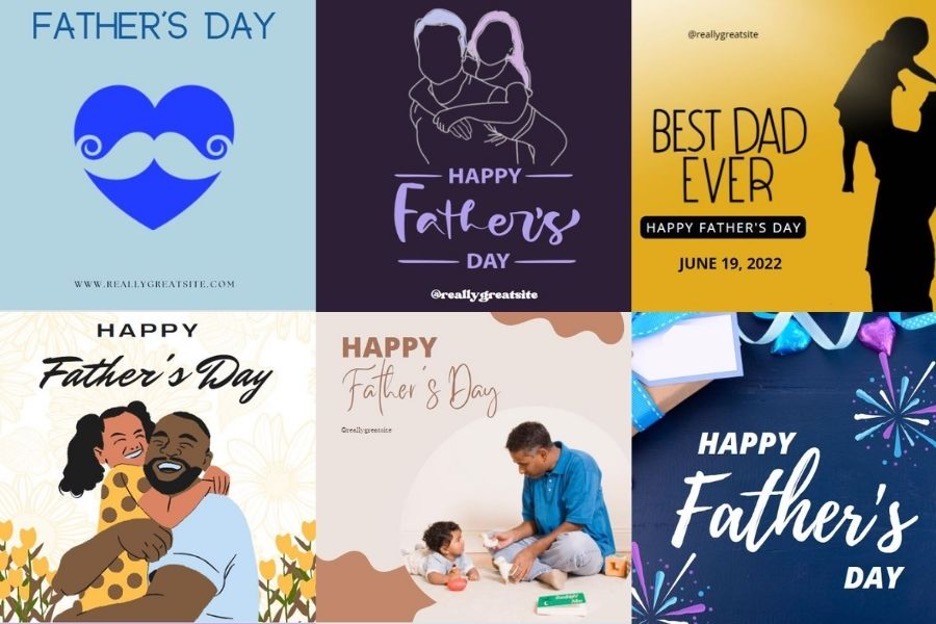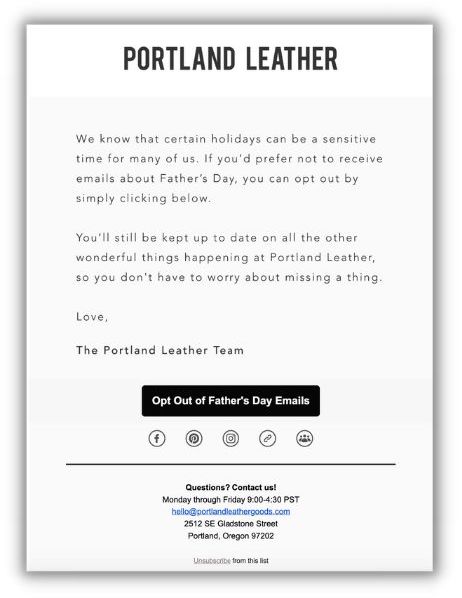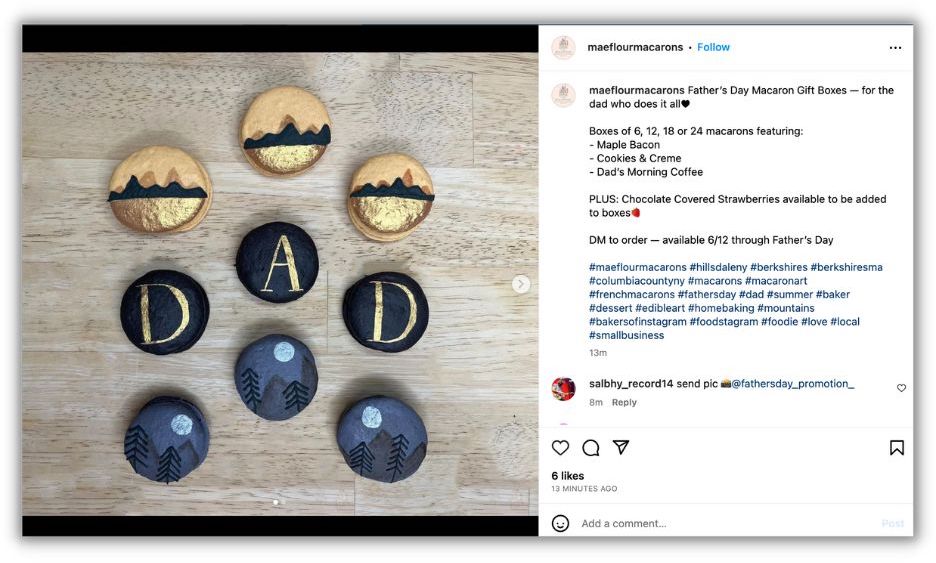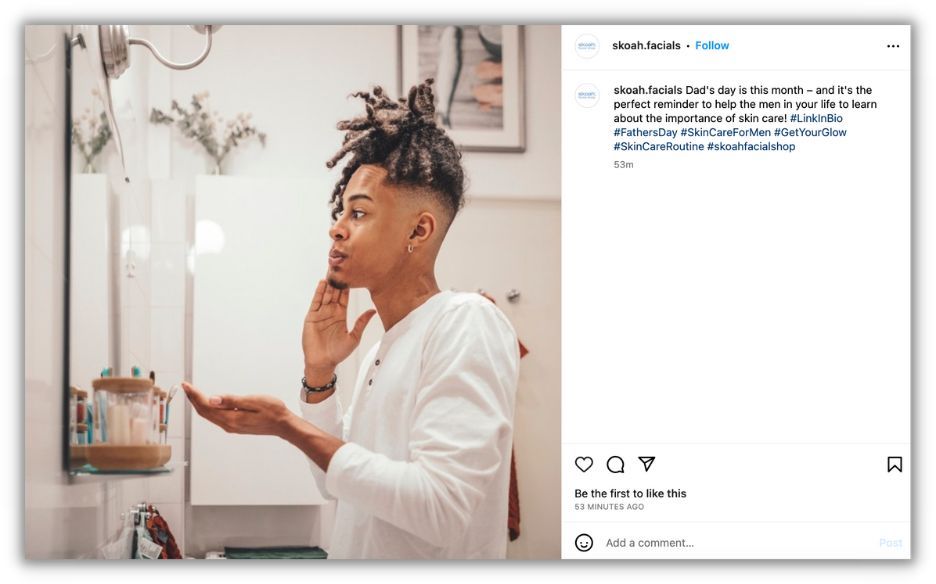PPC
25 Happy Father’s Day Messages & Greetings (+Templates)

Since it was first celebrated in 1910, Father’s Day has been a day to highlight the dads and father figures in the US. 75% of Americans plan to celebrate Father’s Day this year, and you might want to say something to them through your marketing.
But you don’t want your Father’s Day message to be like a pencil with two erasers…
You want it to resonate with your audience, communicate something important from your business, and be sensitive to those who may find Father’s Day difficult.
So we’re sharing Father’s Day messages that will hit those marks you can use in your social posts, email marketing campaigns, and more.
Table of contents
Quick tips for your happy Father’s Day messages
Before we share some messages you can copy and paste (and customize!), here are some tips to keep in mind for your Father’s Day greetings.
- Be sensitive. Father’s Day can be a complicated or sad time for some. Keep that in mind as you plan your marketing campaigns around Father’s Day and schedule your messages.
- Use inclusive language. Many people can act as a father figure—stepfathers, uncles, brothers, fathers-in-law, and other trusted adults. That’s why it’s so important to use inclusive language where appropriate in your Father’s Day messages.
- Adjust your message. Depending on where and how you’re using your Father’s Day greeting, you may need to make tweaks to what we’re sharing. Customize these ideas and examples for your needs and the specific channel you’re sharing it on so it’s most effective for you.
- Stay on brand. It’s always important to keep your brand guidelines and brand personality in mind when selecting or creating marketing messages for your business. And Father’s Day is no exception.
Here are some Canva templates you can customize for social media to stay on brand:

[Facebook] [Instagram] [Twitter]
Happy Father’s Day messages
Here, we’ve broken down some Father’s Day messages and greetings you can use in your marketing.
Father’s Day greetings for email
Copy, paste, and customize these Father’s Day email messages.
Promotional email
Say thanks to the dad or father figure in your life.
We’ve got plenty of gifts for dad as part of our Father’s Day sale!
Stop in before Father’s Day or shop with us online for 30% off your purchase.*
You don’t want to miss this 😎
Business logo
Business contact information
*Terms and conditions

Event email
Looking for something fun to do with your dad or the father figure in your life this Father’s Day? Join us for our Father’s Day event!
On DAY from TIME-TIME, you can enjoy:
- Specifics of event here
- Specifics of event here
- Specifics of event here
Don’t miss this opportunity to make fun memories!
Let us know you’re coming here.
Business logo
Business contact information
*Terms and conditions
Father’s Day opt-out email
We know Father’s Day can be a difficult time for some. If you prefer not to see Father’s Day emails from us this year, we invite you to opt out below.
Button: Opt out
You’ll still hear from us about other events, promotions, and announcements.
Thinking of you,
Business name
Business logo
Business contact information
*Terms and conditions

Father’s Day messages for social media
Use these Father’s Day messages on social media.
- Whether you’re a dad or like a dad, we want to wish you a Happy Father’s Day. Your love is the greatest and most precious gift in the world 🎁
- Happy Father’s Day to all those celebrating a special person in their lives. And to those struggling today, just know we’re thinking of you.
- We don’t say it enough, so say it extra today: Thanks for everything you do, dads.
- Happy Father’s Day to our dad (and father figure) customers!
- Cheers and beers! Father’s Day is here🍻
- It’s not a dad bod. It’s a father figure 😎

Find more Father’s Day Instagram captions you can try here.
Father’s Day messages for SMS
Use these messages in your SMS marketing this Father’s Day:
- One for you, one for dad! Stop in for BOGO [product name] today through Father’s Day.
- Our Father’s Day sale is happening NOW! Don’t miss out. Check out our great deals https://www.wordstream.com/blog/ws/2023/06/09/happy-fathers-day-messages
- Looking for Father’s Day gift inspo? How about [product/service]? Get it 30% off TODAY ONLY https://www.wordstream.com/blog/ws/2023/06/09/happy-fathers-day-messages
- Happy Father’s Day! Stop in today for a special treat.
Get tips to make SMS marketing successful for you.
Father’s Day quotes
You can use these Father’s Day quotes on social media, in your emails, and more.
- “A father is neither an anchor to hold us back nor a sail to take us there, but a guiding light whose love shows us the way.” – Unknown
- “My father gave me the greatest gift anyone could give another person: He believed in me.” – Jim Valvano
- “No man stands taller than when he stoops to help a child.” – Abraham Lincoln
- “A father is someone you look up to no matter how tall you grow.” – Unknown
- “My father didn’t tell me how to live. He lived and let me watch him do it.” – Clarence Budington Kelland
And, we had to include a couple of funny ones:
- “A father carries pictures where his money used to be.” – Steve Martin
- “Raising kids may be a thankless job with ridiculous hours, but at least the pay sucks.” – Jim Gaffigan

General Father’s Day messages for any business or occasion
Here are some more general Father’s Day greetings you can adapt for any of your marketing needs around this holiday.
- From all of us at [Business Name], we wish you a very Happy Father’s Day!
- If Father’s Day is hard for you, just know that you are loved and cared for.
- Wishing everyone a very Happy Father’s Day!
- Thanks to all the dads and father figures giving their time, support, and love. You’re appreciated!
- Dad, you are rad! Happy Father’s Day!

Make Father’s Day memorable
Use these Father’s Day messages and greetings for memorable marketing. Just remember our tips: be inclusive, be sensitive, and stay on brand. And, to all the dads and father figures reading this: Happy Father’s Day!
Want more messages for your marketing? We’ve got you covered:


















